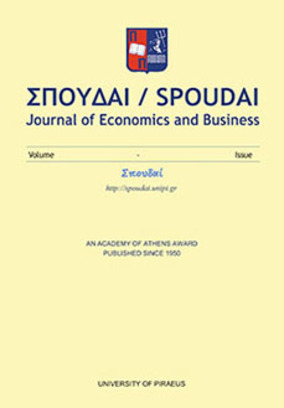Parliamentary coalitions, an n-person game approach to politics
Part of : Σπουδαί : journal of economics and business ; Vol.62, No.3-4, 2012, pages 16-29
Issue:
Pages:
16-29
Abstract:
In this paper, we present the general contribution of n-person game in turbulent environment of parliamentary coalitions. Same basic data about the coalition form and the characteristic function is necessary in order to connect n-person game theory and behavioral game theory. Taking the Norway elections as an example we study the possibility of a required long term coalition in Greece. We potentially suggest which parties could form a coalition by using game theory for those cases, where the choice of one party government is not possible.
Subject (LC):
Keywords:
game theory, n-person game, characteristic function, parliamentary coalitions
Notes:
Περιέχει διαγράμματα, πίνακες και βιβλιογραφία
References (1):
- Axelrod, R., 1970. Conflict of Interest. Chicago: Markham.Camerer, C.F., 2003. “Behavioral game theory”, Princeton University Press.Converse, P.E. and Valen, H., 1971. Dimensions of cleavage and perceived party differences inNorwegian voting. Scandinavian Political Studies 6:107-152.de Swaan, A., 1973. Coalition Theories and Cabinet Formations; A Study of Formal Theories ofCoalition Formation Applied to Nine European Parliaments after 1918, Elsevier/Jossey Bass.Ferguson, T.S., 2005. Game Theory, Academic text, Dept of Mathematics, UCLA.Metron Analysis, 2013. Voting intension survey for Ependitis newspaper, January. Shapley, L.,1979. Game theory, P-6230, RAND.Nash, J.F., 1950. Equilibrium points in n-person games, National academy of the USA, Vol. 36, No. 1,pp. 48-49.Scarf, H., 1973. The computation of Nash Equilibria, Academic text, Yale University.Shapley, L.S., 1968. N-Person game theory, RAND, P-3752, January.Shubik, M., 1971. On Gaming and game theory, RAND, P-4609.Straffin, P.D., 2006. “Game theory and strategy”, Beloit College, The Mathematical Associationof America.von Neumann, J. and Morgenstern, O., 1953. Theory of games and economic behavior, 238-242,Princeton University Press.




